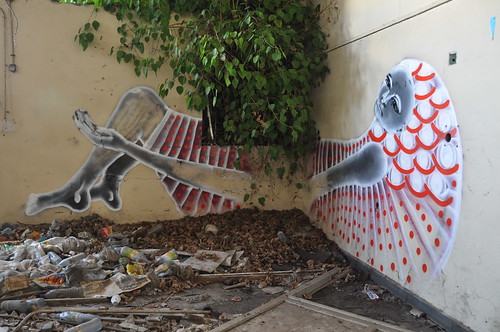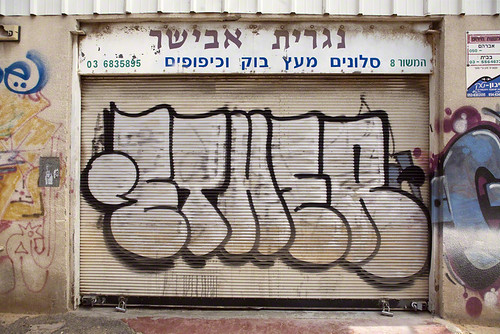I have just uploaded a travel documentary that I made during my recent 12-day Nepal farewell expedition. With no exaggeration and in all modesty, I think that I can safely say that it is better than Planet Earth and Baraka combined. It is on Youtube and only 20 minutes long, and below I have provided a description of the locations and events. Check it out!
Indra Chowk contains one of the best fabric markets in the old part of Kathmandu. I was there to buy
dhakka fabric, which is the patterned fabric most famously used in the national hat of Nepal. I was buying fabric to ship to the United States and give to the
Multicultural Refugee Coalition, an organization in Austin that provides support for refugees entering the United States. I have volunteered there and I have friends among the ethnically Nepali Bhutanese refugee community, and the fabric is for their sewing programs. When I was finished, I went to the spice market at
Asan Chowk and bought cardamom, because I like it and it's cheap there.
I left Kathmandu by motorcycle and followed the Prithvi Highway. My driver and traveling companion was my daai Saroj. We stopped at the roadside town of Malekhu. Because it is a popular rest stop on the road from Kathmandu to Pokhara, I have been in Malekhu at least a dozen times, but this was my first time eating the fried fish that Malekhu is famous for.
 |
| Saroj at the gateway to Bandipur |
In the afternoon we rolled into Bandipur, a beautiful hill town a few miles from Dumre. The touristification of the town has only increased in the two years since I last stayed there for my education research project, but it is still a great place. My favorite part about staying in Bandipur back in the day was living above a restaurant, because in the morning I would come down to breakfast and people from the town would be sitting and drinking tea and discussing news and politics, and I always felt a welcome party to interesting conversations. Saroj and I stayed in the same place and I introduced him to some of my old friends.
 |
| Bandipur's Khadga Dev Temple, which didn't make it into the documentary, contains the sacred sword of Mukunda Sen, the ancient King of Palpa. I was told that the sword bends and vibrates and grants superhuman strength to the priests who worship it on the festival day when it is taken out. Always covered, it is passed first to the Kame (Blacksmith) priest, the blacksmiths being father to the sword-goddess, and then to the Magar priest, the Magars being the warriors. |
Saroj and I misjudged the distance from Bandipur way down the hill to
Siddhi Cave, and we ended up walking down the hill for most of the morning. We were attacked by leeches for the first time, although I escaped with only one tiny bite. Passing the shrines at the entrance, we made our way into the cave. In the cave I met a young man who had come from Dumre and we continued further than I had ever been into the cave, down a long slippery ladder and past an underground lake. We continued down a very narrow crevice with water flowing through it until it became too steep and tight for us.
The next day Saroj and I parted ways. He drove his motorcycle down to Chitwan and I continued by bus to
Pokhara. I stayed in Lakeside in the usual touristy areas and I read and ate some pizza while looking out over the bar scene. The next day I met my
bhaai Min, who studies in Pokhara but is from the village of
Tangting, across the valley from Sikles. I had been to Tangting twice before (see
Return to Tangting), but never in the rainy season, and I was unprepared for how difficult it would be to get there. We took two buses, one which had to ford through a river (on the way back the river had gotten too deep and we had to wade across), and then continued up the side of the hill on foot for five hours through the pouring rain. When I finally came to Tangting, it was dark, I had 34 leech bites on my legs and the beginnings of a fever and sinus infection that kept me pretty grumpy for the next four days. But I was staying with old friends who cooked me rice and lentils and water buffalo meat and gave me strong home-brewed liquor as 'medicine' and let me sleep the rest of the next day. During the rainy season, Tangting seems to rest inside a cloud 24-7, which made walking its cobbled streets a beautiful and eerie experience.
I walked down the next day and made it back to Pokhara. I had planned on taking a plane flight to Jomsom, but the Jomsom airport had been closed for four days straight due to bad weather, and for three days in a row after that I arrived at the airport at five in the morning only to see my flight cancelled. It was a good thing, though, because I had a chance to recover.
 |
| This guy did not have a chance to recover. |
On the third day I decided to cancel my plane ticket and take the bus route from Pokhara to Beni. After Beni the roads are very unreliable during the wet season because of constant landslides. At the site of a landslide, the bus stops and all the passengers walk across until they arrive at the other end, where there will hopefully be another bus or jeep waiting to take the passengers to the next landslide. In this way I ended up in
Tatopani and stayed in a trekker's lodge. There I met Sanjeev, a driver from Delhi who was making a pilgrimage to Muktinath Temple in Mustang. We travelled the rest of the way together. Tatopani is famous for its hot springs, which I enjoyed early the next morning before embarking on a series of quick jeep rides and hikes across landslides (the longest hike of the day was about an hour and a half). On the path I saw
sadhu holy men on their own pilgrimages to Muktinath, European and American trekkers, Australian educational development workers, and local villagers and students. At one point we traveled in a jeep hired by the development workers, which stopped to pick up a sick person in a village to take them to a health post further along the road. We often had to wait for jeeps to fill up with passengers, or for bus drivers to finish their meals, but soon enough the emerald green forests became dark brown scrub hillsides and we arrived in
Jomsom early in the evening.
Jomsom and Marpha are trekker hotspots, and they are known for growing the best apples in the area. I had promised an old teacher of mine that I would bring him some apple brandy from Jomsom, which was not hard to find. The shelves of all the stores are filled with apple juice, apple brandy, experimentally home-brewed apple ciders... I wanted to buy apples but they were not yet in season. Sanjeev made friends with a Jomsom butcher who was originally from Bangalore, and he showed us the apple orchards and tried unsuccessfully to convince an apple farmer to give us some samples.
The next day we bought bus tickets. Sanjeev employed one of the boys from the butcher shop to guide us to Muktinath and to find him a salikram, a sacred fossil-stone from the waters of the Kali Gandaki river below Muktinath Temple which is an integral part of a Vishnu shrine. This time of year the river rushes with muddy water as dark as oil. It must be crossed on foot, which is a difficult feat because of the rushing water, deep mud, and sharp hidden rocks.
 |
| Why are you smiling, you fool? |
At
Muktinath I started feeling the wintry cold and the altitude. There was a drizzle, and we passed some tourist lodges and Buddhist monasteries before making the slight ascent up to the main temple complex. There Sanjeev did puja at the Muktinath Temple to Vishnu and bathed in the sacred 108 water taps (head-achingly cold water in the wintry air). He filled a water bottle with the sacred water for later use. We visited the Buddhist temple where the 'self-arisen' natural eternally burning flame is contained, and then we headed back. I got stuck crossing the river by myself for about twenty minutes, and one of the buses broke down and had to be pushed down the hill to a small town, but we returned to Jomsom with daylight to spare.
 |
| The cast of adventurers: a pilgrim, an American, and a butcher. |
Early in the morning the skies were finally clear and a plane flight back to Pokhara looked probable. At the airport, security officers stopped checking my bag and started to question a group of French trekkers and their Nepali guide, who had brought back a large statue that they claimed to have purchased. The security officers doubted the authenticity of their receipt and the age of the statue and accused the trekkers of temple-robbing, but I did not get to see how that drama played out because my plane landed and it was time for a dramatic flight back to Pokhara. It took only 20 minutes to cover the same ground that had taken 2 days by bus.

















































